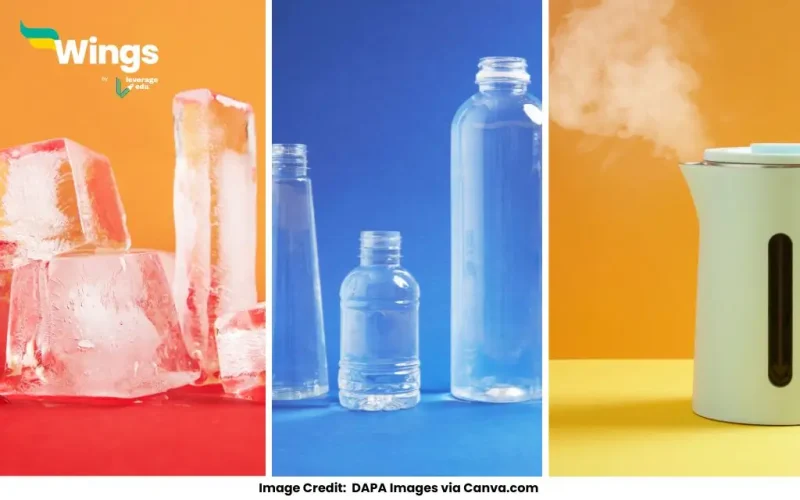Answer
Verified
Answer: Matter exists in three primary states: solid, liquid, and gas. These states are distinguished based on the arrangement of particles, intermolecular forces, and physical properties.
Key Difference Between Solid, Liquid, and Gas Phase
| Property | Solid | Liquid | Gas |
| Shape | Fixed shape | Takes shape of container | No fixed shape, fills container |
| Volume | Fixed volume | Fixed volume | No fixed volume, expands to fill space |
| Particle Arrangement | Tightly packed, orderly | Loosely packed, random | Very loosely packed, |
| Intermolecular Forces | Strong | Moderate | Weak or negligible |
| Compressibility | Almost incompressible | Slightly compressible | Highly compressible |
| Fluidity | Does not flow | Flows easily | Flows and diffuses rapidly |
| Density | High | Moderate | Low |
| Kinetic Energy | Low | Moderate | High |
Fun Facts about States of Matter
- Unlike most substances, water expands when it freezes, making ice less dense than liquid water.
- There is a fourth state of matter called Bose-Einstein Condensate (BEC), discovered in 1995, where atoms behave as a single quantum entity.
- The most abundant state of matter in the universe is plasma, found in stars and lightning.
- Some substances, like dry ice (solid CO₂), transition directly from solid to gas without becoming liquid.
Common Doubts in Chemistry
 45,000+ students trusted us with their dreams. Take the first step today!
45,000+ students trusted us with their dreams. Take the first step today!


 One app for all your study abroad needs
One app for all your study abroad needs










